During my first visit to a dental clinic, I tend to notice that there are many different dental kits or dental instruments that are laid down beside the dental chair. A dentist and dental nurse use a variety of dental instruments/equipment for examining, cleaning, cutting and restoring teeth.
According to Coventry Dentists, there are many different dental instruments used by oral health care professionals in their different roles and specialities. When I got my fillings done by a Dentist in Sacramento they introduced me to the different tools they used. When I got my fillings done by a Dentist in Sacramento they introduced me to the different tools they used.
Certain types of instruments are unique to various therapeutic procedures. During an examination by a general dentist, the most commonly used instruments are the cotton pliers, mouth mirror, probes and explorers.
The article provides an in-depth explanation of dental instruments, including various types and their uses.
Key instruments include:
- Diagnostic Tools: Explorers, probes, and mirrors for checking teeth and gums.
- Restorative Instruments: Tools for filling cavities, such as carvers and amalgam carriers.
- Surgical Instruments: Forceps, scalpels, and elevators for extractions and surgeries.
- Hygiene Tools: Scalers and curettes for cleaning and maintaining oral health.
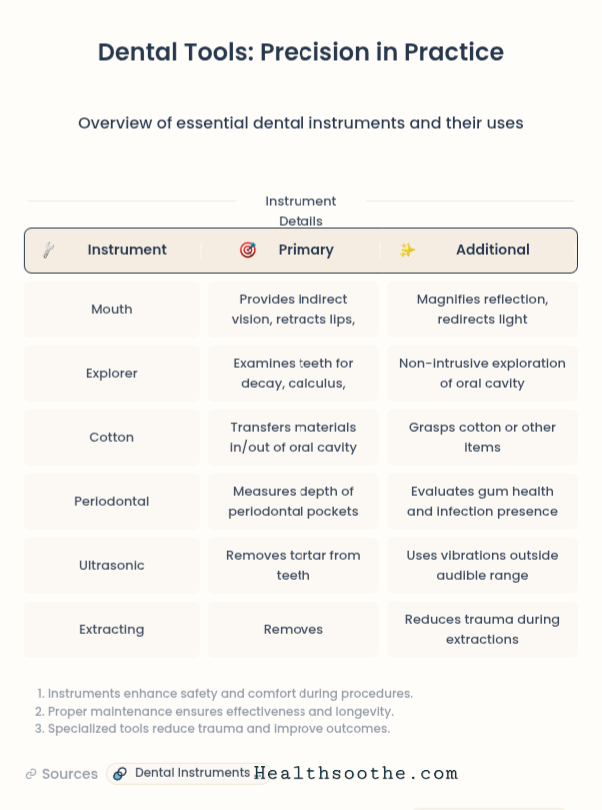
Practical Identification of Dental instruments
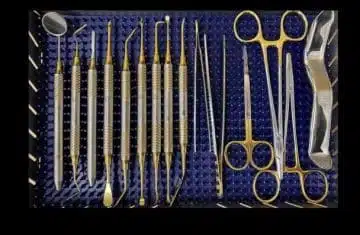
What is instrumentation?
Types of instruments?
- Working end: This is a part that is used to carry out the purpose and the function of an instrument.
- The shank: It is the part of an instrument that connects the working end and the handle.it may be a curve or straight.
- And handle: The handle is the part that we hold. For example, Double-ended instrument I.e two working ends for example spoon excavator and carver. The single-ended instrument, for example, Coupland elevator. Corn socket instrument I.e they are separated from the shank instrument and working end and permit instrument exchange or replacement for example mouth mirror, handpieces and bur.
Physical identification of dental instruments include:
- Basic instruments
- Basic Materials used in dentistry
- Local anaesthesia
- Instruments and materials used in rubber dam placement
- Instruments and materials used in moisture control
- Handpieces, Burs the rotary attachment
- Matrix band and matrix retainers
- Elevators
- Extraction forceps
- Impression trays
- Orthodontics instruments.
Dental instruments can be either hand-held or rotary (for example-driven in a handpiece) and some can be of fiber optic light sources and ultrasonic equipment.
>The types of hand instruments can be categorized based on their function:
- Examining the mouth and teeth
- Scaling or professional cleaning of teeth
- Cutting teeth and removing cavities
- Placing and condensing filling materials
- Carving and finishing dental fillings
- Miscellaneous types.
General features of hand instrument design
Most of the hand-held instruments are made of stainless steel or sometimes carbon steel. Chisels and scalers often have tungsten carbide tips. The basic design of a hand instrument has a blade, a shank, and a handle.
Cavity Preparation Hand-Cutting Instruments
- Enamel Hatchet, Binangel Chisel, Wedelstaedt Chisel, Hoe Excavator: To remove decay and refine cavity preparation. TRAY SET-UP: Amalgam, composite.
- Straight Chisel: To remove decay and refine cavity preparation; pushing motion
- Angle Former: To remove decay and refine cavity preparation, especially line angles and point angles; pushing motion
- Gingival Margin Trimmer: To remove decay and refine cavity preparation, especially to bevel the gingival margin of the cavity preparation
Basic instruments
- Dental probe: it is used to detect the depth of caries.
- Mouth mirror: it is used to view the patient mouth or for visualization of the patient mouth.
- College tweezers: For picking cotton wool into the patient mouth or for picking up some instrument.
Basic Materials needed in Dentistry
- Gloves: For protection
- Face mask: For protecting the face.
- Cotton wool: For cleaning up the saliva, blood and to stop bleeding.
Local Anesthesia
- Topical Local Anesthesia For example. Ethyl chloride
- Injectible Local Anesthesia For example. Xylocaine
Uses of Topical Anaesthetics
- Prevention of pain from needles during injections.
- Relief of painful sockets, ulcers, and wounds
- Prevention of gingival discomfort while taking copper ring impression.
Below are 112 Best Dental instruments and their uses:
- Dental mirror: It’s used for visualization of the oral cavity or for viewing the patient mouth.
- Dental probe: It’s used to detect the depth of caries or the depth of caries.
- College tweezer: It’s used for picking cotton wool or gauze into the patient mouth.
- Dental tray: It’s used for picking dental materials or instruments.
- Coupland Elevator: It’s used for the expansion of the socket or dilating the socket.
- Scalpel holder: For holding a scalpel blade during a surgical procedure.
- Periosteal elevator: For raising flap from the floor of the mucosa membrane.
- Bone file: It’s used for file-in bone.
- Push scaler: It’s used for removing debris or calculus from the patient mouth/teeth.
- Spoon excavator: It’s used for removing debris or plaque from the patient mouth/teeth.
- Fine excavators: Used to remove soft food deposit.
- Mixing spatula: It’s used for mixing dental materials(E.G .alginate).
- Amalgam carrier: It’s used for taking/putting amalgam into the prepared cavity.
- Amalgam plugger: it is used to condense filling materials and apply pressure. Also known as amalgam condenser.
- Plaster knife: It’s used for plasterwork.
- Wax knife: It’s used for waxwork.
- Model: It’s used to demonstrate, positive liveness of the patient’s mouth.
- Dental syringe: It’s used for introducing local anesthesia into the patient mouth.
- Fishtail elevator: It’s used for expansion of the socket.
- Cryer Elevator: It’s used for the expansion of the socket.
- Winter elevator: It’s used for expansion of the socket.
- Hospital pattern elevator: It’s used for expansion of the socket.
- War wick’s James elevator: It’s used for expansion of the socket.
- Elevators: Instruments commonly used for dental extraction. (Warwick James elevators, Cryer elevators, Winter elevators, Periosteal elevators, Molts elevators, Root-tip pick elevator, Heidbrink root tip elevators, Crane root tip elevators, Potts elevators, Cogswell-A & B elevators, Flat elevators, Miller’s apex luxators, Crossbar apex luxators). They are all used for the purpose of elevating the tooth out of the socket.
- Suturing materials: It’s used for suturing the injury path.
- Suturing tips: It’s used for extracting excess blood or saliva from the mouth.
- Dental needle: It’s used to introduce local anaesthesia into the patient mouth (it has 2 types long and short).
- Disposable needle and syringe: It’s used for flushing the prepared cavity/Also for the irrigation process.
- Lower impression tray: It’s used for taking a lower impression of the teeth/ mouth.
- Upper impression tray: It’s used for taking an upper impression of the teeth/month.
- Periodontal probe: It’s used for measuring the depth of the periodontal socket or depth of caries.
- Wooden spatula: It’s can also be used for cheek retractor / it also serves as an examination set or it’s used for mixing dental materials.
- Upper right molar forceps: It’s used for the extraction of the upper right molar tooth.
- Upper left molar forceps: It’s used for the extraction of the upper left molar tooth.
- Universal molar forceps(upper): It’s used for the extraction of both upper left and upper right molar tooth.
- Universal molar forceps(lower): It’s used for the extraction of both lower right and lower left molar teeth.
- Straight forceps or upper anterior forceps: It’s used for extraction of the upper anterior tooth.
- Lower anterior forceps: It’s used for extraction of the lower anterior tooth.
- Lower molar forceps: It’s used for the extraction of the lower molar tooth.
- Lower premolar forceps: It’s used for the extraction of a lower premolar tooth.
- Upper premolar forceps: It’s used for the extraction of an upper premolar tooth.
- Sickle scaler: It’s used for removing calculus from the tips of the cervical region.
- Ball burnisher: It’s used for smoothing the canal or during filling of the tooth.
- File: It’s used for enlarging the canal.
- Egg burnisher: It’s used for smoothing during filling.
- Reamers: It’s used for enlarging the canal.
- barbed broach: It’s used for removing the dead pulp (necrotic pulp)
- Dental chair: It’s used for sitting the patient during any dental procedure/surgery.
- Shade guide: It’s used in choosing shade I.e color of the teeth.
- Amalgam edge: It’s used for preventing overhanging amalgam.
- Scalpel: It’s used for cutting during surgical procedures.
- Stock teeth: It’s used for replacing mixing teeth.
- Cheatle forceps: It’s used for picking instruments.
- Condenser: It’s used for condensing restorative materials into the cavity.
- Bayonet: It’s used for extracting the upper retained root.
- Root forceps: It’s used for extracting retained root(lower teeth).
- Mallet: It’s used for extracting the retained root.
- Chisel: It’s used for extracting the retained root.
- Mortal and pestle: It’s used for mixing amalgam.
- Amalgamator(electronics one): It’s used for mixing amalgam.
- Saliva ejector: It’s used for removing excessive saliva from the floor of the mouth.
- Mouth prop: It’s used for opening the mouth during surgical operations.
- Probe briault: It’s used to detect interproximal decay.
- Probe moon: It’s used to detect loose bones and root in the socket.
- periodontal curette: are used for the purpose of scaling and root planning.
- Probe measures: It’s used to detect the depth of pocket around the periodontal.
- Mouth gag: It’s used to open the mouth during dental procedures.
- Tissue forceps: It’s used for holding tissue by the dental nurse during a surgical procedure.
- Bristle brush: It’s used for brushing during scaling and polishing.
- Mixing slab: It’s used for mixing dental materials.
- Film hanger: It’s used for hanging x-ray film.
- Mixing bowl: It’s used for mixing dental materials(e.g Alginate, dental stone).
- Dental flask: It’s used for the flasking denture.
- Lead coat: It’s used for protection during the x-ray procedure.
- Lecrol carver: It’s used for carving or removing a pimple from the surface of the model.
- Carver: It’s used for removing excess dental materials from the patient mouth.
- Wirecutter: It’s used for cutting dental ash wire.
- Dental scissors: It’s used for cutting stainless steel wire during a dental procedure.
- Matrix band: It serves as a mixing wall and it allows amalgam to be packed into the cavity.
- Matrix retainer: It helps in retaining the matrix band.
- Janquet: It’s used for removing sub-gingival calculus.
- Handpiece and bur: It’s used to gain access into the cavity.
- Measurement paper point: It’s used for drying the canal.
- Short dental needle: It’s used for infiltrating.
- Long dental needle: It’s used for blocking.
- Stainless steel wire: It’s used for inter-maxillary fixation.
- Gutta-percha: It’s used for obturating( when replacing the pulp).
- X-ray view: It’s used to view x-ray during a dental procedure.
- Ultrasonic scaler: It’s used for scaling and polishing.
- Glass slab: It’s used for mixing lining materials.
- Electronics ultrasonic machine: It’s used for scaling and polishing.
- Autoclave: It’s used to sterilize dental instruments after use.
- Surgical blade: For cutting during a surgical procedure.
- Phomopressor: It’s used in lining the canal during pulpotomy.
- Elastic module: It’s used to hold down the ash wire into the bracket.
- Artery forceps: It’s used to sit an elastic module.
- Bite registration wax: To check the accuracy of the teeth(the bite and the occlusion).
- Ruler gauge: It’s used for measuring.
- Adam’s plier: It’s used to band wire together inside the patient mouth.
- Elastic separator: It’s used to separate a contact point(it comes in various colors).
- Paper point: this is for drying the canal/for obturating the pulp to replace.
- Ligation turner: to thick in the wire.
- Ash contouring wire: To give you the shape of the ash bar.
- Bird beak wire: To form coil and band a wire.
- osteotomy: it is used in the dental implants to cut the bone. Similar to chisel.
- Lentulo spiral is a dental instrument used to properly insert root canal sealer and cement during a root canal, and endodontic therapy
- Half Hollenbach: Used to test for overhangs or flash.
- Dental hatchers: Used to dilate the tooth cavity and gain more entrance and removed the thin carious enamel.
- Willis gauge: Willis bite gauge is used to measure the positions of the mandible in the rest and bite positions
- Band pusher: It is used to push orthodontic bands to properly seat them and precisely adapt them around the entire contour of teeth.
- Gutta Percha removal files: As the name implies is used to remove gutta-percha from smaller and more curved canals.
- K-files: Endodontic K-files are major endodontic tools for the cleaning and shaping of the root canal systems.
Base on analysis and research, some of this instruments above are their manufacturers name and they are available online. No any modifications whatsoever . I just stated there uses.
Instruments used for placing and condensing filling materials
- Plastic instruments are used to convey and shape filling materials and are usually flat blades that do not use heavy pressure. Some instruments have rounded ends for shaping and burnishing the surfaces of fillings. Plastic instruments are usually made of stainless steel for most materials though there are also thin Teflon-coated or titanium nitride instruments that are non-stick for composite fillings.
- Condensers or pluggers instruments are used for compressing and forming filling materials. You must apply heavy pressure in order to use these instruments properly. So, therefore, these instruments are usually used for metal or amalgam fillings.
Instruments used for carving and finishing fillings
Carving and finishing instruments have sharp or semi-sharp blades of various shapes. They are used to carve materials by cutting and scraping.
Instruments and materials used in rubber dam placement
- Rubber dam: Prevents entry of moisture to a cavity, especially prior to insertion of silicate fillings, and during root canal therapy.
- Rubber dam clamps: Hold dam on teeth.
- Rubber dam forceps: Aid placement of clamps on teeth.
- Rubber dam frame: Holds dam in position around the mouth.
Materials: lubricant, Cotton wool.
Instruments and materials used in moisture control
Handpieces, Burs the rotary attachments
- Mandrels
- Unmounted Green Abrasive Stones
- Unmounted Green Abrasive Disks
- Mounted Green Abrasive Stones, Disks, And Points
- Bristle Brushes; cup, wheel, Tooth polishing.
Burs
Matrix band and matrix retainers
Dental Elevators
- Fishtail elevator
- Cryer elevator
- Winter elevator
- Coupland elevator
- Warwick James elevator
- Periosteal elevator
- Hospital elevator. See the full list of all the elevators and their uses
Extraction forceps
- Lower molar forceps: This has two beaks, facing each other and faced downward. Uses: This is used to extract right or left lower molar teeth. For extracting teeth from the alveolar bone
- The extraction of upper molar forceps: There are two types of upper molar forceps; Right upper, left upper.
- Upper right molar forceps: The beak part faces my right hand and the mouth of the instrument faces upward. Uses: it is used for extraction of right upper molar teeth.
- Upper left molar forceps: The beak part faces my left hand and the mouth also faces upwardly. Uses: used for extraction of left upper molar teeth.
- Lower anterior forceps: This has a somehow flat head making both mouths facing downward. Uses: For the extraction of lower anterior teeth.
- Lower premolar forceps: This has a puff ( semi-circled ) head, with the mouth facing down. Uses: used for extraction of lower premolar teeth.
- Rongeur’s
- Upper bayonets (awkwardly placed wisdom teeth)
- Lower incisors, premolars, roots.
- Upper read’s (canines, premolars, roots)
Periodontal instruments
Periodontal instruments are used to maintain the gingivae and the surrounding structure and is used for the general cleanliness and treatment of the teeth.
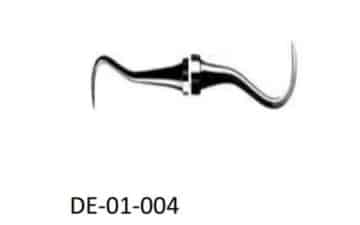
- Sickle/Jacquette Scalers: Used For removing calculus on the surface of the gingival area.
- Black Titanium Instruments
- Sickle Scalers/Curettes: It is Used For removing supragingival calculus
- Debridement/Furcation: For removing residual calculus after ultrasonic scaling for deep pockets.
Instruments used for Periodontal Surgery
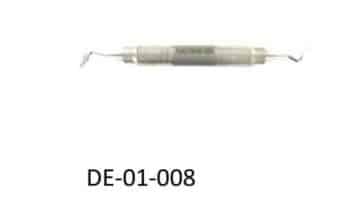
- Surgical and Knives/files: For removal of soft tissue, and for removal of granulomatous
- Surgical Curettes: Used For removal of remaining tissue of infected gingival area after extraction
- Periotomes: For removal of teeth with minimum tissue damage
- Surgical Chisels: It is used For scraping out and reshaping bone; for removal of flaps and splitting bone
Implants instruments
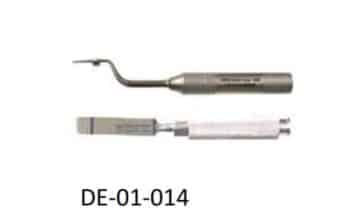
- Osteotomes: For bone spreading for implant
- Sinus Lift instruments: For separation of sinus lining from bone
- Osteotomes 2: used in surgical procedures for preparation of dental implants
- Endo Forceps Use, Bone Syringe, Castroviejo, Titanium instruments: are used For implantation
- Tissue Plier: For preventing slipping while reducing the weight over 20%
- Tissue, Cotton and Dressing pliers: For implantation
- Accu Luxating: It is used for pulling, lifting up the periosteum and loosening the tooth from the lip
Prophy – SRP Instruments & Supplies
Prophylaxis is the prevention of the spread of disease, Dentistry is what we know as Dental Cleaning. SRP stands for Scaling and Root Planning this is what we know as a deep cleaning where patients need anaesthesia because the instruments clean beneath the gums.
- Ultrasonic Scaler Unit & Tip: It is used to spray water to cool down the tip, it removes calculus from teeth with the high-frequency tip.
- Chlorhexidine 0.12%: This is a mouthwash used to prevent pericoronitis
- Prophy paste: This is used to polish teeth after cleanings. Here is the 10 Basic Prophylaxis Tray Setup
- Fluoride Varnish: Used to prevent cavity and tooth decay and remineralize teeth.
- Floss: It is used to clean in between teeth and educate the patients on how to floss properly at home.
- Prophy Angle: It is used to apply the prophy paste on the patient’s teeth and is connected to the handpiece.
- Patient Toothbrush: Used to educate the patient on brushing techniques and also provided to take home.
Operative instruments
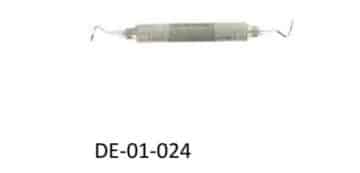
- PKT Waxing: For shaping, carving or pouring molten wax
- Gingival retractors/cord packers: Used For protecting tissue during cavity preparation and placement of composite fillings
Endodontic instruments
- Pluggers and condensers: For vertical pressing and compacting filling materials
- Spreaders and heat carriers: Used For filling solid medicine materials into the endodontic area during lateral condensation
- Rubber Dam Clamps: Used to stabilizes and holds the dam secure
- Surgical Periosteal: For retracting periosteum after removing gingival tissue
- Bone Chisels/files: For final smoothening/removing bone by pushing/pulling out
- Root Splinter: For extracting root tips of the tooth where normal forceps cannot reach
- Sponge and Dressing Forceps: For lockable forceps for seizing the end of a blood vessel to control haemorrhage
- Haemostatic forceps: For lockable forceps for seizing the end of a blood vessel to control haemorrhage
- Needle holder: Used for holding and guiding the needle securely during suturing
- Gum Scissors: For cutting threads and gum
- Tungsten Carbide insert: For cutting threads and gum
- Raspstories: It is used For hooking skin during surgery, also as retractors for holding back the lips and cheeks
- Skin hook and retractors: It used For hooking skin during surgery, for holding back the lips, cheeks and tongue
- Root tip picks/teasers: It used For removing residual root tips of the tooth
Crown instruments
- Crown Scissors: Used For removing crowns permanently by cutting off the seal between tooth and crown after splitting
- Crown Spreader: Used For splitting and spreading the crown open for removal
- Crown remover: Used For gripping onto the crown and removing it from the tooth
Impression trays
Types of an impression tray
- Upper impression tray
- Lower impression tray
- Edentulous patient
A solid partial set of 10, a perforated partial set of 10 (upper/lower), solid pull denture, a perforated full denture
Use: For forming a crown frame
Orthodontics instruments.
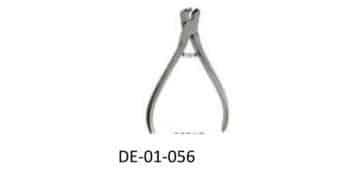
Cutters: Used For cutting wire during orthodontic procedures
Dental unit: Chair mounted dental unit
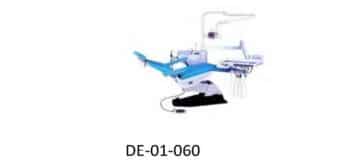
- Towel Clamps Use: For securing drapes to the skin and for holding tissue
- Artery forceps: To sit elastic modules.
- Elastic module: To hold down the ash wire into the bracket
- Elastic separator: To separate a contact point.
- Safe distal end wire cutter: Use for cutting wire.
- Band pusher: To sit the band.
- Adams plier: To band wire inside the mouth.
- Band remover: For removing orthodontic bands from teeth
- Pliers: For bending wire during the orthodontic procedure
- Bracket holder: To grip bracket inside the mouth.
- Ruler Guage: For measuring
- Sep a ring: Separator or module separator
- Cheek retractor: To retract or expand.
Every effort as been made to ensure dental professionals are provided a theoretical background upon which the dental team can base their practical work on. However, no website can take the place of practical experience, and no attempt as been made to give detailed advice on those aspects of work which can best be learned by practical demonstration.
Basic Dental instruments Names and Pictures pdf
Dental pds-instrument-supply-manual-1
RELATED READING
- 5 Ways To Clean and Sterilize Dental Instruments
- Dental tools and their uses
- Moisture Control in Dentistry
- Dental Explorer: Periodontal Instrument, Dental Excavator,and their uses
- Dental Amalgam tray set-up (Silver-Colored Dental Fillings)
- Dental tray setup for composite fillings
- CROWN PREP TRAY SET-UP INSTRUMENTS
- 10 Basic Prophylaxis Tray Setup
- Buying Dental Instruments Supplier
References
- “Classification of Dental Instruments”. Arkansas Tech University. Retrieved 2020-01-16.
- Physical Properties of Five Brands of K-Files – NCBI. Retrieved 2020-01-16.


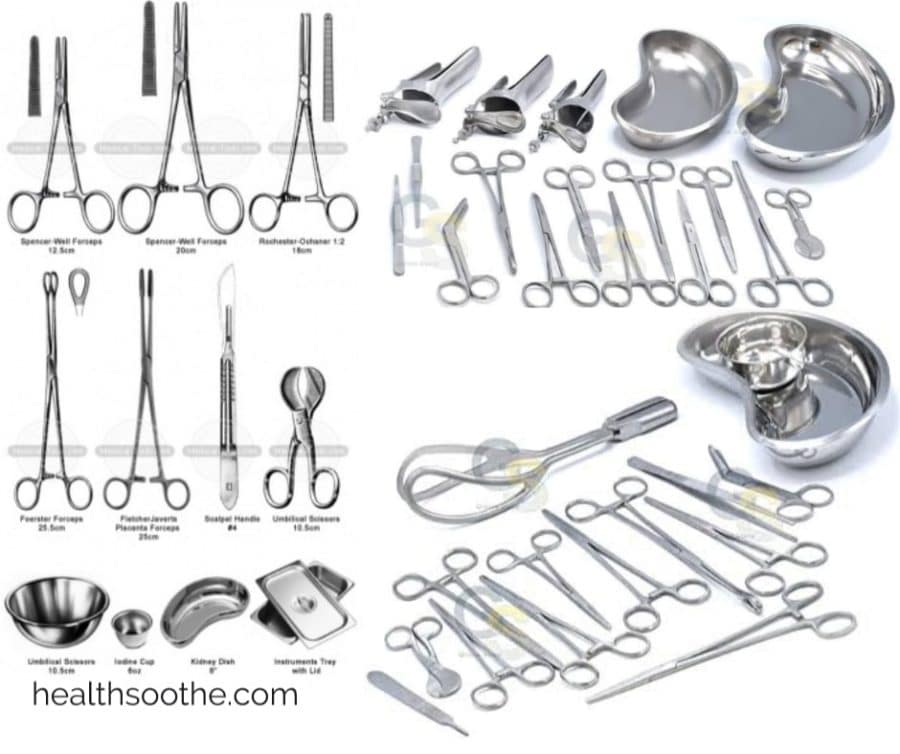
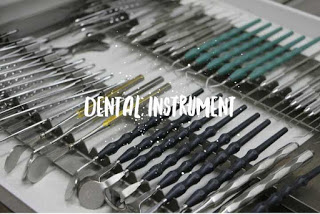



2 Comments
Excellent writing!
You are completely right, A dental specialist cares for your teeth, yet they don’t do that without legitimate instruments. Dental instruments assist your dental specialist with investigating explicit spaces of your mouth and perform particular activities.
PEDDLY IMPEX SURGICAL was established in 1995, with the vision of becoming the most reliable source of Dental & Surgical Instruments supplier having the mission of total customer satisfaction with true, honest commitments and business ethics. Based in Sialkot Pakistan the city known for the manufacturing of quality products worldwide, we are approaching the progressive market leaders of the world who are looking for a reliable manufacturer/supplier with the best product for their price. We believe in commitment towards quality, which has a generation of skilled employees and quality vendors for raw material and with manufacturing experience of more than a decade in this field.
The quality management system has been properly implemented and is successfully working at all production stages. This is indeed a result of constant, professional, and vigorous efforts carried out by our most responsible staff members and skilled workers. Its adequacy is kept in check on a regular basis by conducting internal audits undertaken by our most experienced experts.
Our products as appearing on our website are available in German Steel, Japanese Steel, Carbon Steep, and Pakistani Steel. Samples and prices can be obtained on demand with specifications. Deliveries of the orders in any quantity are ensured within time and in excellent quality without any minor flaw.
You can send your own original samples, drawings, photo or article numbers of any International Catalogues for making the counter sample under your specifications for approval.